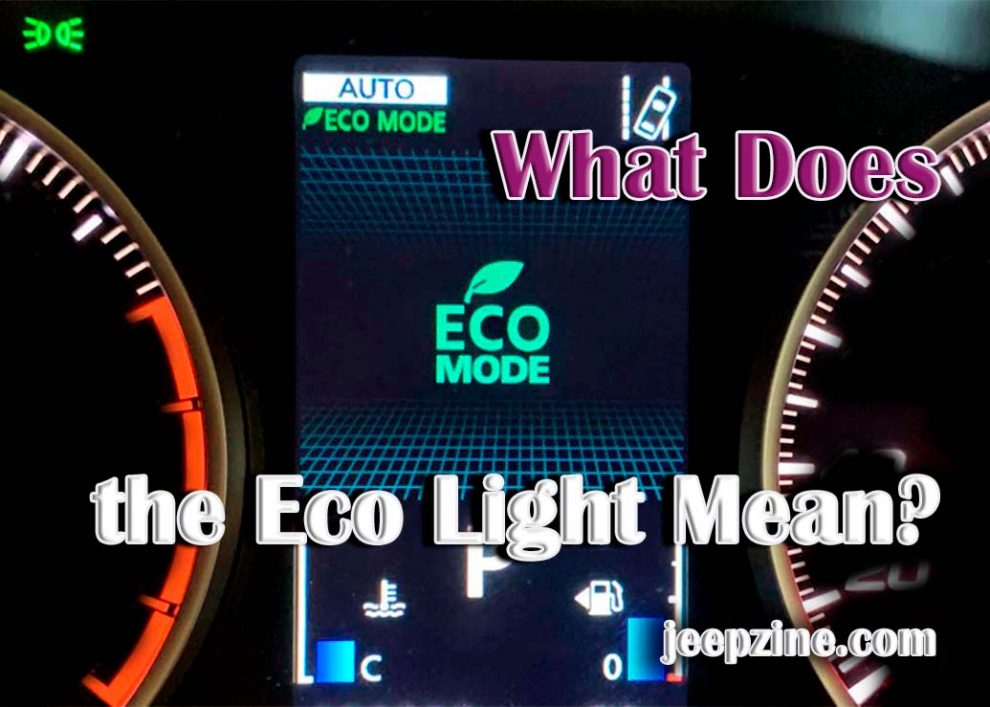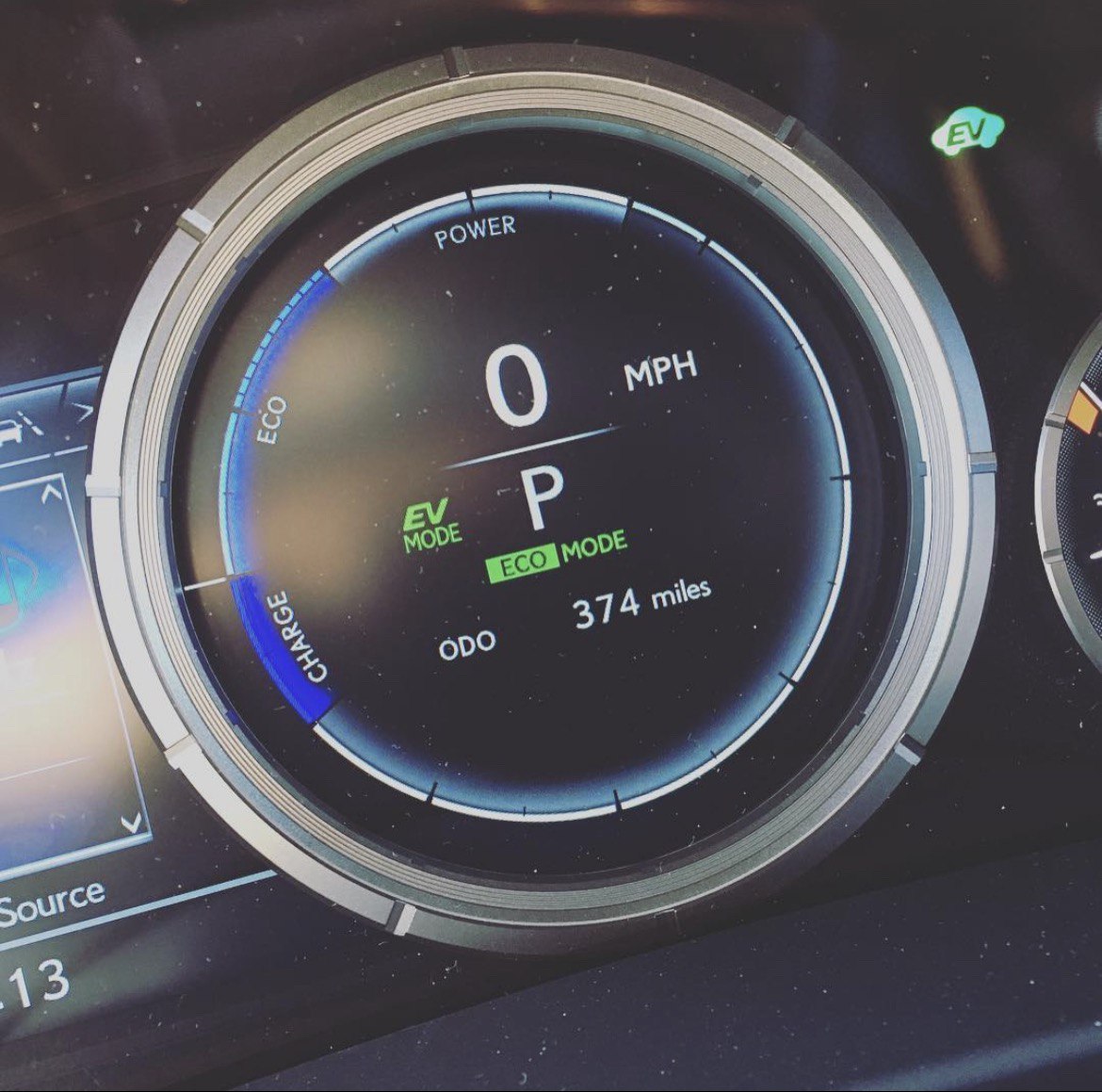The Eco Light is a feature in many modern vehicles that aims to help drivers increase fuel efficiency and reduce emissions. This light or indicator often illuminates when certain driving conditions are met that optimize fuel efficiency. It is important to understand what it means and how it works to save on gas consumption, minimize your carbon footprint, and maximize your vehicle’s performance.
What Does Eco Light Mean in a Car?
The Eco light in a car is an indicator that informs the driver about the ‘Eco Mode’ being activated or functioning. This feature is designed to improve fuel efficiency by controlling certain actions of your vehicle, such as automatic air conditioning adjustment, heating levels, and lowering engine power when required. The light is typically green and might simply be worded as “ECO,” indicating that the feature is switched on. It is present in most modern vehicles, particularly hybrid or electric cars, as part of advancements toward more environment-friendly technologies. Per the vehicle’s design, you may control this function or be automated based on driving conditions. In essence, if you see an Eco light illuminated on your dashboard, your car is functioning in a mode that conserves fuel and decreases emissions – contributing to your economy and environmental sustainability.
How Does Eco Mode Work?
Eco mode works by altering the performance of the vehicle’s engine, transmission, air conditioning, and other systems to optimize fuel efficiency. It can include lowering the throttle response to reduce rapid acceleration, adjusting gear shifting patterns for smoother transitions with less power demand, and minimizing auxiliary loads such as reducing AC compressor usage. Depending on your vehicle’s specifications, when you switch on Eco Mode or when it automatically activates, several changes occur that aim to reduce fuel consumption. The car’s computer adjusts specific real-time parameters based on actual driving conditions. It could even change how hard you press the gas pedal before the car accelerates in some vehicles. Additionally, if you own a Jeep Wrangler and are interested in further upgrades, do check out our article on the Best Brake Pads for Jeep Wrangler.
 Reasons Why Is My Eco Light Not Working?
Reasons Why Is My Eco Light Not Working?
There could be many reasons your Eco light is not working in your car. As the name suggests, the Eco light indicates that the vehicle’s computer has determined conditions for the car to enter a fuel-saving mode. However, it can be due to several issues when it malfunctions or doesn’t turn on.
-
Disabled Eco Mode: The first and most common reason is that you might have accidentally turned off or disabled the Eco mode in your car. Some vehicles allow drivers to turn this feature on or off according to their driving preferences. Refer to your vehicle’s owner manual for instructions on enabling this feature.
-
Malfunctioning Sensors: Your car relies on sensors (like oxygen, throttle position, and mass airflow sensor) to determine if conditions are appropriate for eco mode operation. If any of these sensors are damaged or malfunctioning, they might send incorrect readings that prevent eco mode activation.
-
Engine Problems: Sometimes engine problems can interfere with eco-mode functionality too – issues such as poor compression, misfiring cylinders, or inadequate fuel delivery systems could all prevent your vehicle from operating efficiently enough for eco-mode engagement.
-
Transmission Issues: Like engine problems, transmission issues such as slipping gears or problems with shift points could also interfere with optimum eco-mode operation.
-
Software Glitches: Modern cars rely heavily on computer systems and software algorithms for the smooth functioning of their features, including the Eco mode system; these systems sometimes fall prey to programming errors and glitches, causing them not to work correctly.
If you suspect any of these reasons behind your malfunctioned Eco light, consult a professional mechanic to diagnose and fix the problem correctly.
Is It Bad to Always Drive in Eco Mode?
Driving in Eco mode consistently is okay, but it’s important to understand the implications and considerations. Eco mode optimizes fuel efficiency by adjusting the vehicle’s performance settings. However, it may result in reduced power and acceleration, which can be a concern in certain driving situations, such as merging or overtaking. Additionally, Eco mode may not be suitable for demanding driving conditions or when immediate responsiveness is required. It’s essential to balance fuel efficiency and performance and adapt to specific driving conditions as needed. Regular maintenance and following the manufacturer’s recommendations for your vehicle are also crucial, regardless of the driving mode. Ultimately, the decision to always drive in Eco mode depends on personal preference and the driving environment, so it’s essential to consider your driving needs and make an informed choice.
Conclusion
In conclusion, the Eco light in a car is a valuable tool to promote fuel efficiency and reduce emissions. It signifies activating an eco-friendly driving mode or feature, encouraging drivers to adopt fuel-saving practices. Understanding the meaning and functionality of the Eco light allows drivers to make informed decisions that can save on fuel consumption and contribute to environmental sustainability. While driving in Eco mode consistently is okay, it’s important to consider the trade-off between fuel efficiency and performance and adapt to specific driving conditions. Regular maintenance and following the manufacturer’s recommendations remain essential for the overall health and performance of the vehicle. By utilizing the Eco mode effectively and striking the right balance, drivers can positively impact both their economy and the environment.


 Reasons Why Is My Eco Light Not Working?
Reasons Why Is My Eco Light Not Working?
Add Comment